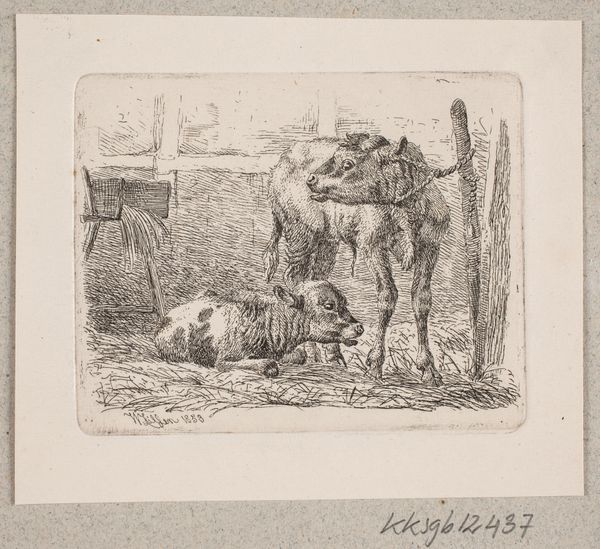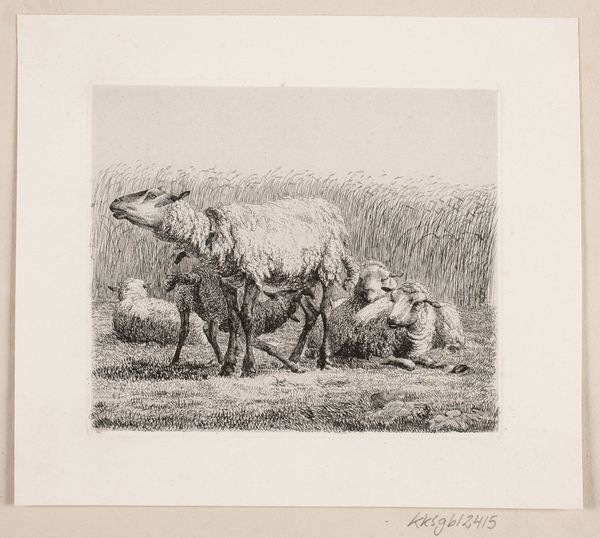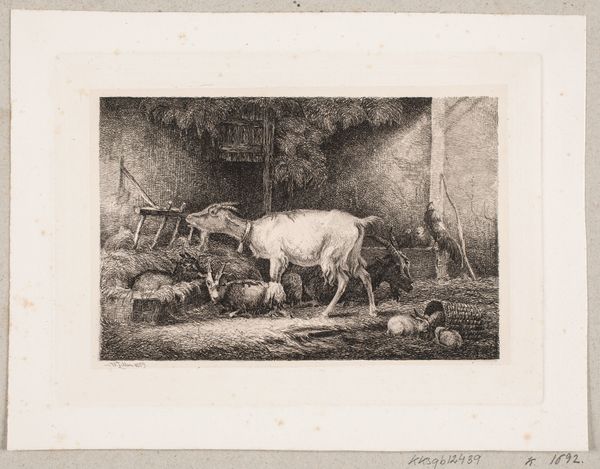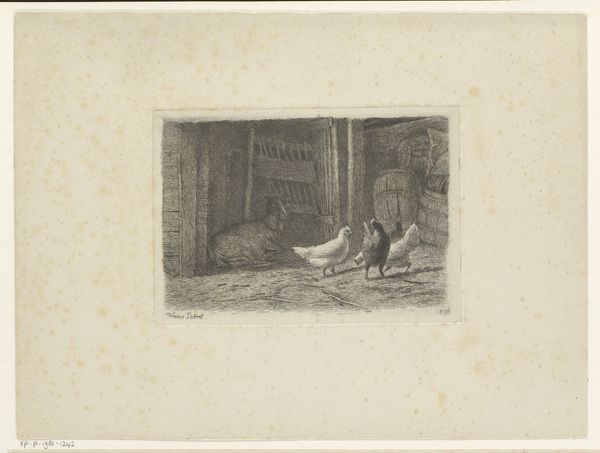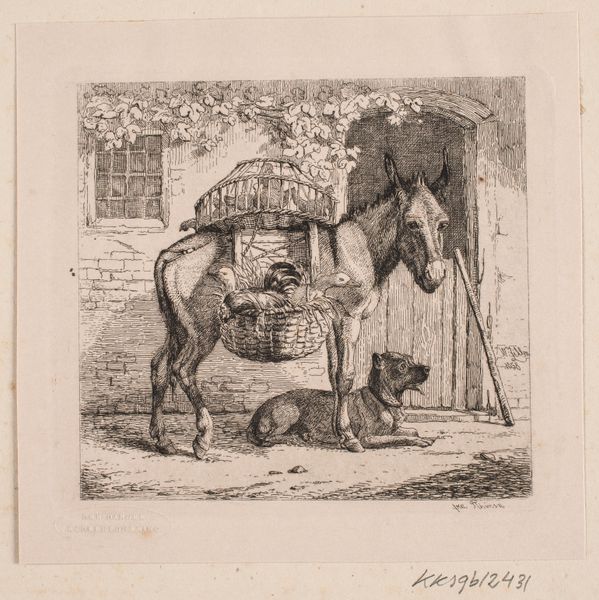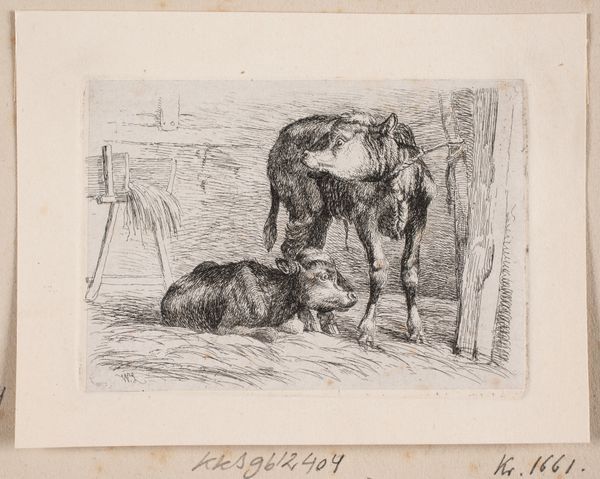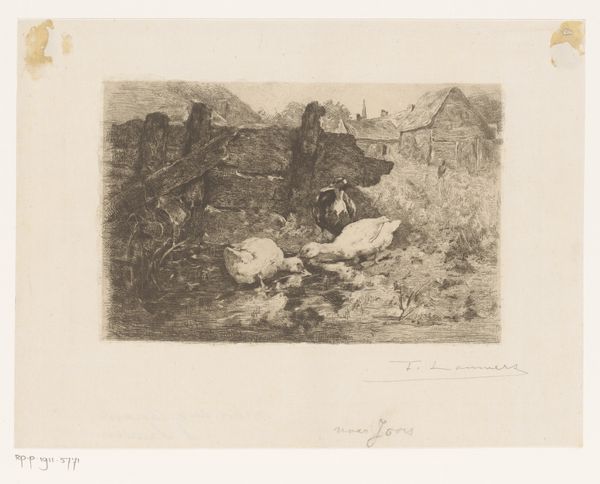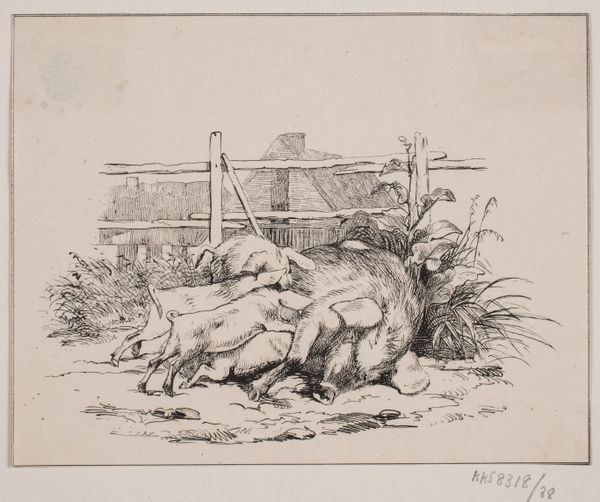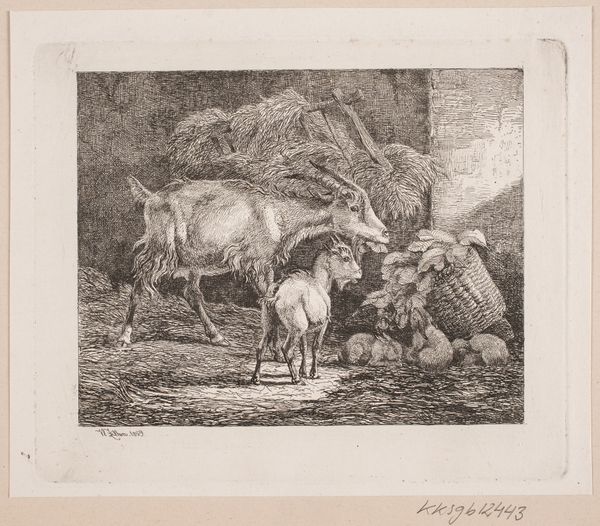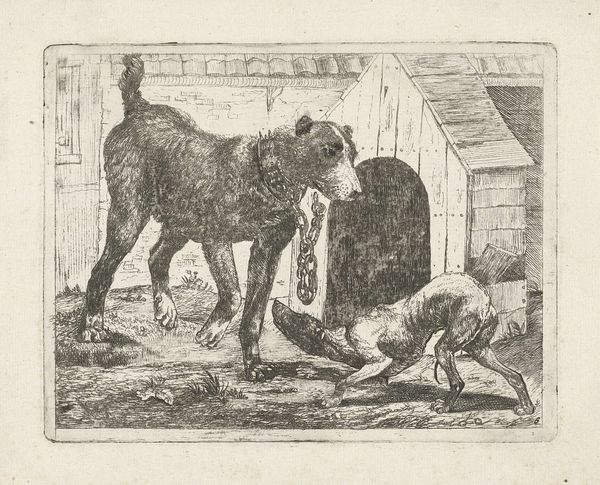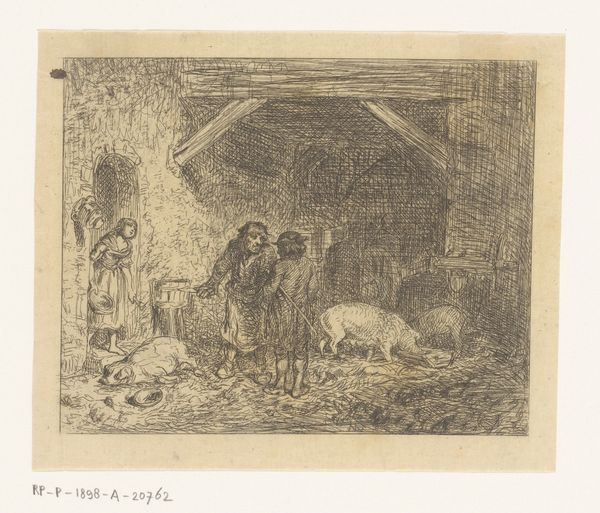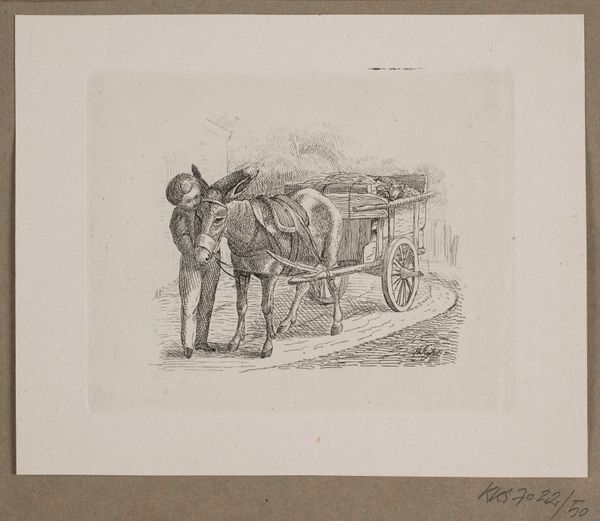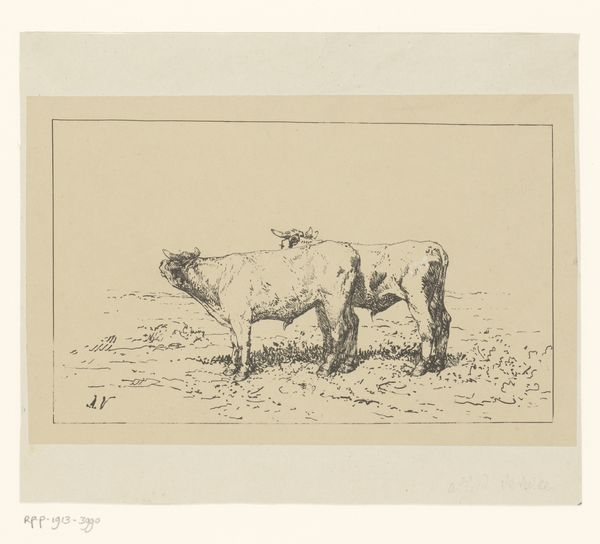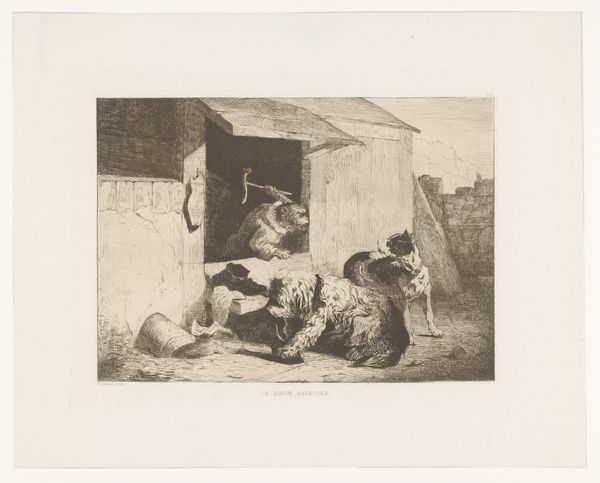
print, engraving
# print
#
landscape
#
figuration
#
line
#
genre-painting
#
engraving
#
realism
Dimensions: 76 mm (height) x 95 mm (width) (plademaal)
Editor: Here we have "Two Calves" created in 1858 by Johannes Wilhelm Zillen, using engraving. The scene has such a quiet feel; two calves in what seems like a simple barn setting. What's your take on it? Curator: This print invites us to consider the labor and resources embedded within it. Zillen’s choice of engraving, a meticulous and time-intensive process, speaks to a commitment to craft. Think about the engraver, the quality of the metal plate, the tools used, the paper itself, and where it came from. Editor: So you are seeing the material choices as significant beyond just depicting the scene? Curator: Exactly! Look at how this scene of rural life, so seemingly straightforward, actually relies on an entire system of production and consumption. The line work itself conveys a specific understanding of labor. The textures and lines almost romanticize this simplicity. Editor: I see what you mean. There is so much detail in such a small print. How does it fit into the wider context of 19th-century art? Curator: It aligns with a broader interest in depicting everyday life, and especially rural life. Realism embraced common subject matter, but this also connects with an industrialized society. Consider how these images of the countryside circulate within a rapidly urbanizing context, potentially fulfilling a certain nostalgia or even functioning as propaganda to the working class. The rise of printmaking made such images widely accessible, driving their consumption and shaping public perception. What does this consumption of rural images by the urban elite tell us about the consumer classes? Editor: So, we're not just looking at calves; we're also looking at the labor, industry, and societal shifts that made this image possible, and the role it plays in shaping societal perceptions! It's like following a thread that connects the barn to the burgeoning factories. Curator: Precisely. Art is so often interwoven with materiality. It helps us reflect critically on not only its aesthetic qualities but also its place within a complex social and economic landscape.
Comments
No comments
Be the first to comment and join the conversation on the ultimate creative platform.
